Michael Walters
Notes from the peninsula
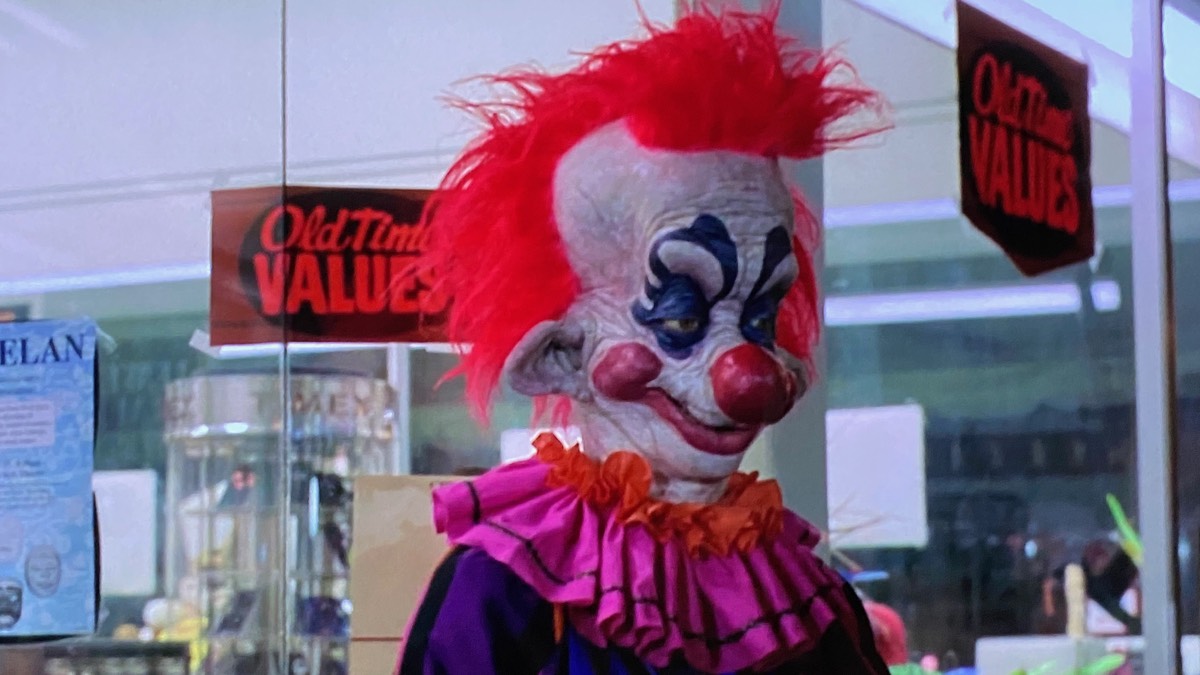
Director: Stephen Chiodo
Clowns on screen have never frightened me, not even Pennywise, although on the page he was a different proposition. Killer Klowns from Outer Space isn’t a film that’s trying to scare you. It’s more of an adult cartoon playing things for grotesque laughs, but it does take the question it asks very seriously: what if alien clowns came to earth to turn people into candyfloss snacks?
Mike and Debbie are making out in the woods near Crescent Cove when they see something fall from the sky. They discover a circus tent spaceship and the bodies of two local people dissolved in a wrapping of candyfloss. The town’s Sheriff doesn’t believe them, so they try to convince his Deputy, Debbie’s ex-boyfriend Dave. Clowns from the spaceship arrive on the streets and start to turn everyone into candyfloss balls, which they collect for food. Mike, Debbie and Dave, along with two friends in an ice cream truck, find the spaceship and face off against the clowns’ giant leader.
But this film is not about plot—it’s about the series of set pieces where clowns approach unsuspecting humans and find amusing ways to dispatch them. The awesome mixture of set design, costumes and puppetry creates a surprisingly real and coherent world that is straight out of a B-movie, but could actually be happening. It’s a one note tune, for sure, and I did get bored in places, but there are also weird wonders here, and I can imagine anyone who saw this too young, perhaps because of a mean older sibling, or lax babysitter, might be scarred for life. It’s not a good film, but it’s also amazing, and I don’t want to think about any of these clowns knocking on my door in the middle of the night.
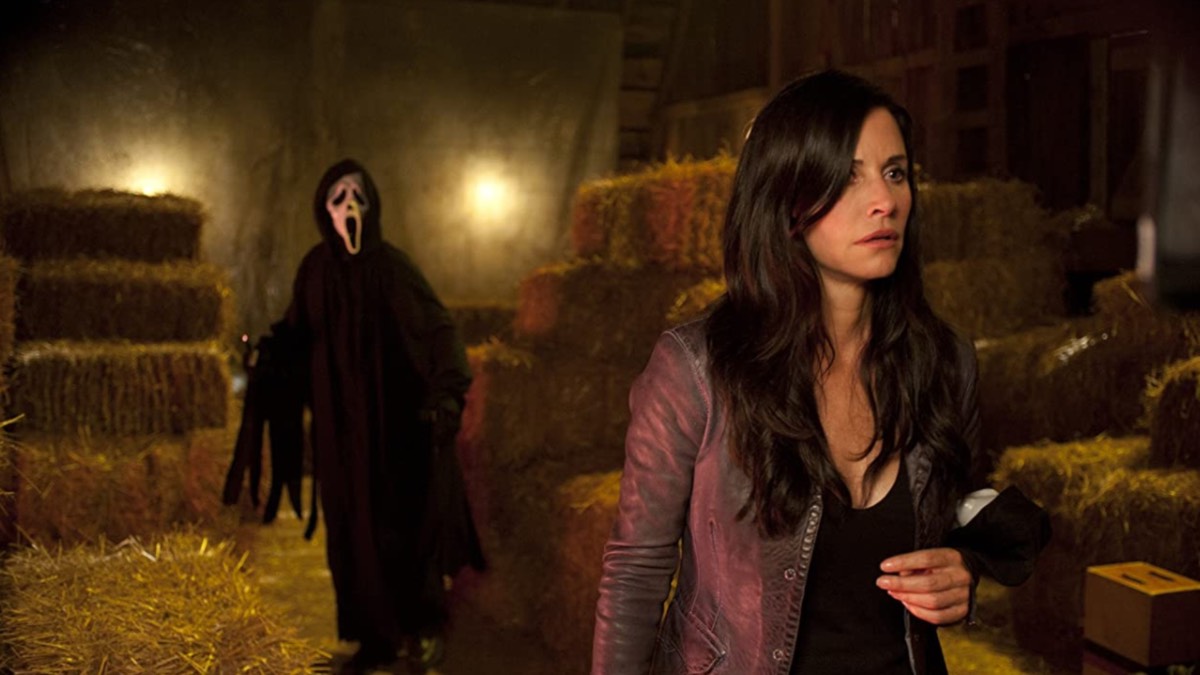
Scream 4 (2011)
Director: Wes Craven
The original Scream changed the course of horror cinema, but I didn’t enjoy Scream 2 or 3 half as much, so when Scream 4 came out to mixed reviews, I skipped it. That was a mistake. Scream 4 is closer to the original, and yes, it’s another complicated, stabby whodunnit, but it embraces teenagers use of social media, and has things to say that are still relevant now.
Sydney returns to Woodsboro on the fifteenth anniversary of the original killings to promote her new book. Dewey is now Sheriff, and is married to ex-journalist Gail, who has writer’s block. Sydney has a niece, Jill, in the High School, which presents us with another set of teens for the Ghostface killer to brutally pick off.
We’ve seen it all before, but that’s the point, and the meta conversations about fourth installments of franchises were predictably fun. A lot of people die, and it could be my age, or because of the way of the world now, but seeing someone stab dozens of people in a small town felt much more disturbing in 2021. I didn’t guess the killer, just like I didn’t in the first film. This one’s motives are unexpectedly chilling. The amusingly-titled fifth installment, Scream, is out in a couple of months. October 2021 is the twenty-fifth anniversary of the first Scream. It’s a terrible shame Wes Craven wasn’t around to direct Scream 5 (a.k.a Scream). Rest in peace, sir.
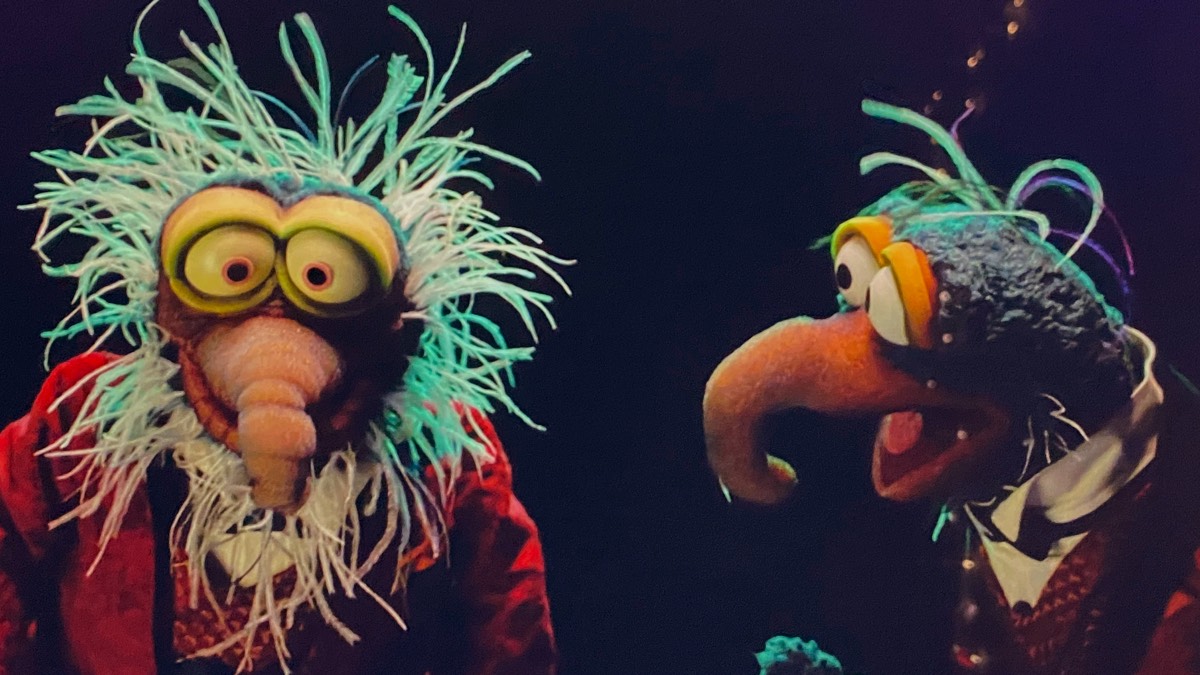
Director: Kirk R. Thatcher
I started this journey with an adapted video game, and nearing the end I find myself watching an adapted amusement park ride—Disneyland’s Haunted Mansion meets the Disney-owned Muppets to create Muppets Haunted Mansion. The first period of The Muppets, 1976—1981, coincided with my pre-teen years, so I remember being allowed to stay up past my bedtime to watch it. Those episodes are on Disney+, and they’re still funny. They feel fresh and on the edge of anarchy, which is astonishing when you think how complicated it must have been to make back in the seventies. This film is a long way from that golden period.
Gonzo decides to miss his friends Halloween party to take up an invitation by The Great MacGuffin, his favourite magician, to stay a night at the most haunted mansion in the world. He takes his friend, Pepe the King Prawn, who thinks he’s going to party filled with celebrities. They arrive to find the house filled with ghosts, and a challenge to face their greatest fear and survive the night. If they don’t succeed, they will be stuck in the house for all eternity.
I watched it with my twelve-year-old daughter who hates anything scary. We both jumped a couple of times, enjoyed the songs, and had fun with it. It’s not a good film, it’s a corporate film, like an amusement park ride in fact, but there are enough little references for horror film fans to keep it interesting, and the nostalgia effect is strong. But Disney Muppets are not Jim Henson’s Muppets, that’s for sure.
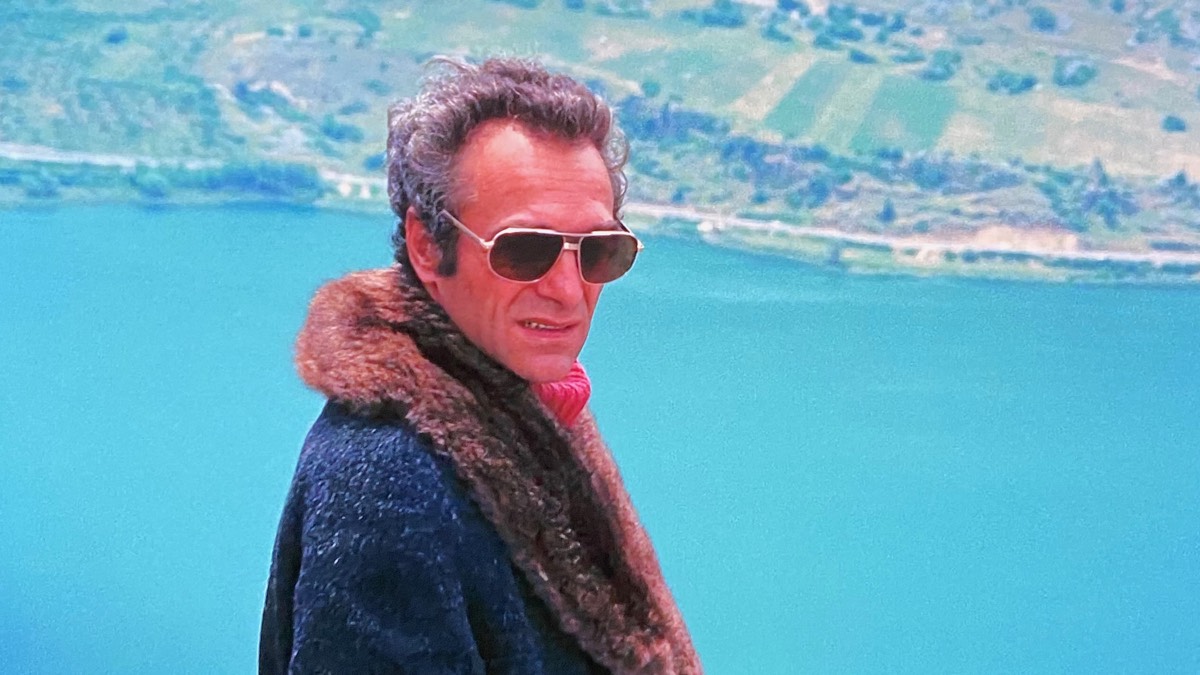
Director: Sergio Martino
I can’t decide if I’m enjoying these borderline gialli. Sergio Martino knows how to build tension, as characters roam the rooms of a massive run down mansion in the Italian countryside, and it depends if I’m in the mood for overwrought acting and sleazy drama. I’m not even sure what the ridiculously long title means: Your Vice Is a Locked Room and Only I Have the Key? I suppose it means the basement, but it could also be the cupboard Irina gets locked in with Satan (the cat).
I’m getting ahead of myself. Oliviero is an abusive husband, professor and writer of novels. He has writer’s block and has become an alcoholic, abusing the women living with him. A killer murders a woman he has agreed to meet, and the police question him. Then his housemaid, Brenda, is murdered, and he forces his wifre, Irina, to help him hide the body in the basement. When his niece, Florina, arrives, she is suspicious. Her brazen sexual appetites arouse both Oliviero and Irina, but Oliviero is becoming more and more brutal with Irina, and we keep seeing a figure watching the house from the trees.
The sex in this film is deviant from the start, with the hippies willingly coerced by Oliviero into humiliating Irina, then Irina provokes him by wearing his dead mother’s dress, and he rapes her. He sleeps with Brenda, a black servant who he denigrates, then with his niece, Florina, and when Florina asks him directly if he slept with his own mother, the implication is that he did. His mother’s portrait sits above the dining room, and her cat, Satan, torments Irina, just like Oliviera does. The final act is a blizzard of switches and double crosses. Actually, his vice is surely his mother, and perhaps it is Irina who has the key. Maybe. It’s all a bit insane.
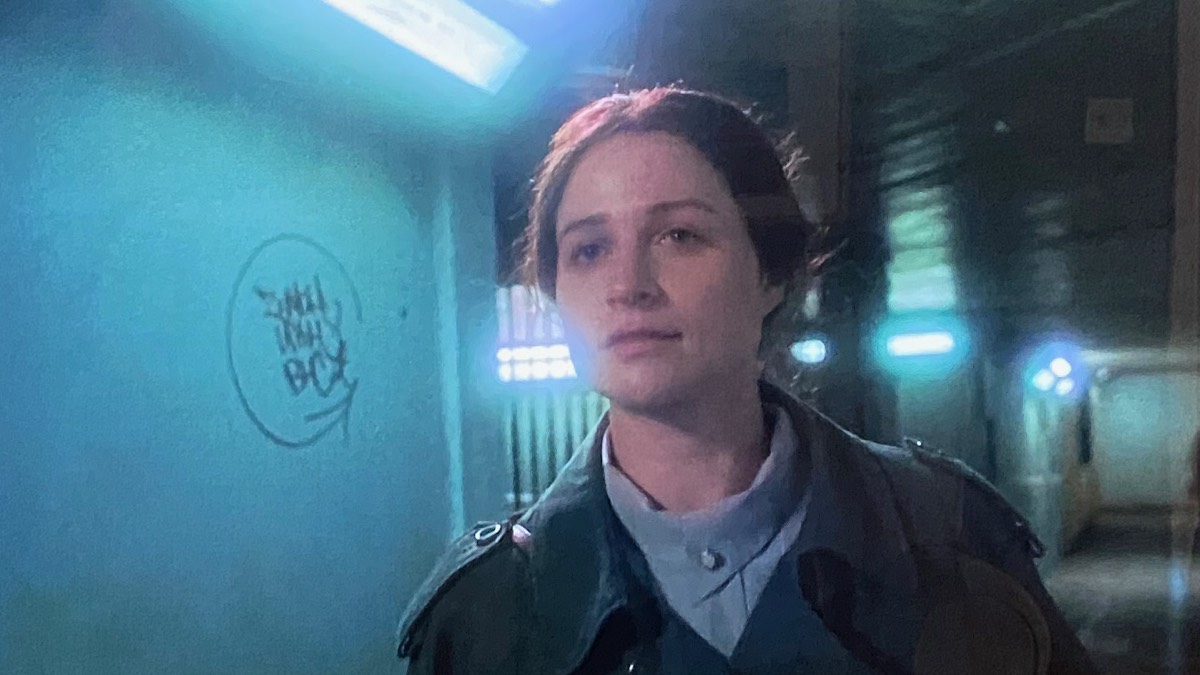
Censor (2021)
Director: Prano Bailey-Bond
Censor has been on my radar all year, since I heard about it, partly because it was set in the era of video nasties, and partly because it seemed to speak to the whole experience of watching horror films. It didn’t disappoint. Enid Baines is a censor at the British Board of Film Classification. Her parents decide it is time to have her long-missing sister declared dead. Enid is a vigilant censor who is seen by some of her colleagues as excessive, but when a man kills his wife and children, copying the gruesome death in a film Enid recently passed for public viewing, she blames herself, and her daily life, the films she has to watch, and memories of her sister, begin to bleed together.
There’s a great interview with director Prano Bailey-Bond in the June issue of Sight & Sound magazine, where she talks about the psychological act of self-censorship, and ‘the positive power of forbidden cinema’. Enid is even more censorious of her childhood memories than she is of the films she watches in work, and as her gentle ex-psychotherapist colleague says, it’s amazing what the mind can edit out to protect itself. Her parents are sweet, but massively repressed, and Enid keeps her colleagues at arm’s length, while not seeming to have any friends. She is alone with her trauma, cutting films to keep the public safe, but also fascinated by what’s in them.
The final act is clever, and funny, which slightly spoils the atmosphere, so by the end I found myself a little disconnected from Enid’s plight. The whole film is really well-crafted, with a fantastic performance by Niamh Algar as Enid, who wills into her reality that which she is desperate to be true. To quote Bailey-Bond, where she is talking about horror audiences: ‘In the fiction of the horror world, they can have what they want, when they can’t in real life.’
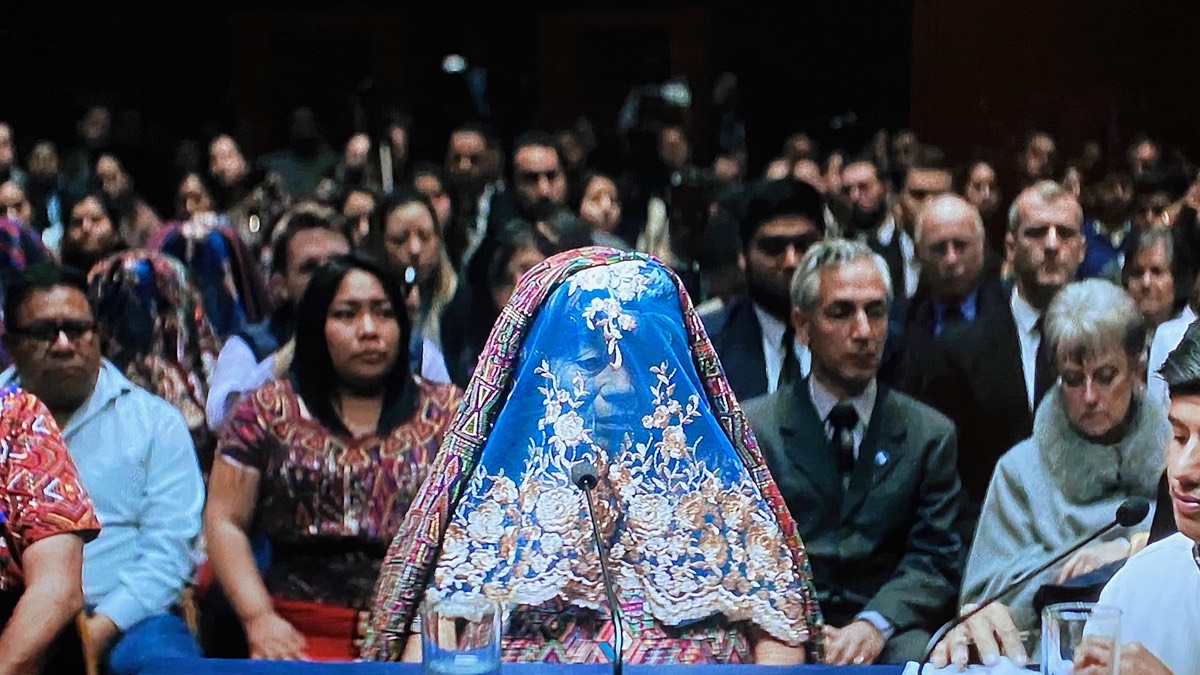
La Llorona (2019)
Director: Jayro Bustamante
Some subjects are horrific enough without the added charge of being in a horror film, so I had been avoiding watching the much lauded La Llorona. It’s about the aftermath of the trial of a general who ordered the genocide of the Mayan people in the Guatemalan Civil War. Elderly former general Enrique Monteverde is found guilty, but his conviction is overturned, and he retreats with his family to their house in the city, which is surrounded by noisy protestors. The servants all leave, and the housekeeper, Valeriana, accepts the help of a young woman from her village, Alma. Trapped in the house, strange things begin to happen to the family, and the ghosts of the past insist on being heard.
Some reviews of the film voice frustration at the slow pace and lack of scares. La Llorona explores an important historical event with commendable weight through a famous Mexican ghost story. Every shot is considered. Doing some research, the small details of the La Llorona legend are dotted all through the film, none more important than Alma teacing Monteverde’s granddaughter, Sara, to hold her breath underwater. The meaning of this becomes shockingly apparent at the end.
Over the end credits, there is a heartbreaking arrangement of the Mexican folk song, La Llorona, which means the weeping woman. She has much to weep over.
Dawn of the Dead (2004)
Director: Zack Snyder
This time last year, I took a chance on George A. Romero’s Land of the Dead, and in the summer I believed the hype and watched Zack Snyder’s Army of the Dead. I must have a hunk of moth DNA in me, because I was drawn by the good review flames of Snyder’s original zombie remake, Dawn of the Dead, an adaptation of Romero’s original script for his… Dawn of the Dead.
Ana, a nurse, wakes up to the start of a zombie apocalypse, and manages to escape her zombified partner and the chaos on her local estate. She hooks up with a police officer, Rhodes, and three other survivors, and they manage to get to a local shopping mall. More people arrive, but so do the zombies, until the mall is surrounded by tens of thousands of the undead. In trying to help a nearby friend, they realise they can’t just stay where they are and wait to die, so they concoct a plan to escape.
Why did Snyder do it? (For the money.) Why did Romero let him? (He didn’t own the rights, and the rights-holder wanted the money.) And why did I choose to watch it? (I’m saying genetic weakness.) It’s a stylish, pacey rehash of Romero’s vision, with all social commentary taken out—an action film, and a decent one. Sarah Polley, giving a strong central performance as Ana, is easily the best thing about the film, especially in the excellent opening sequence where she goes about her evening, casually missing the news reports and emergency messages, until the next morning the zombies are literally at her bedroom door. If only Snyder’s Army of the Dead had a fraction of this average film’s charm.

Director: Kevin Tenney
I might have been too harsh on Saw, but it can take it, and this is the eighteenth film of my #31DaysofHorror. I’m in a dip. To lift my spirits, I wanted a palate cleanser, but rather than go uptown, I went as far downtown as I could go, to the eighties trashy delights of Night of the Demons.
Angela and Suzanne throw a party on Halloween night at an abandoned mortuary on the outskirts of town. A disparate group of misfits arrive, and to frighten everyone, Angela has them play a seance-like party game which summons a demon through the furnace in the mortuary’s basement. The gate they drove in through turns into a wall sealing them in, so when the demon possesses Suzanne, it spreads an infection through the party-goers, and for the remaining few it becomes a fight to survive the night.
The first half is a slog—a cheesy, unfunny, teenage sex comedy. However, the second half saves the day, with some brilliant gore, jump scares, and plenty of imaginative set pieces. There’s a definite influence from Evil Dead 2, with the demon’s eye camera moving through the house, and the demon women making wisecracks. Angela dancing possessed in front of the fire, the film cutting creepily as she moves, is a definite highlight, as are all the special effects. I’m still thinking about the scene where Suzanne pushes a stick of lipstick into her nipple. Judy, who is there with the awful Jay, is dressed like Alice in Wonderland, an apt, fun touch, and the look of the demon itself references the demon at the end of Jacques Tourneur’s classic Night of the Demon. A decent Halloween choice.
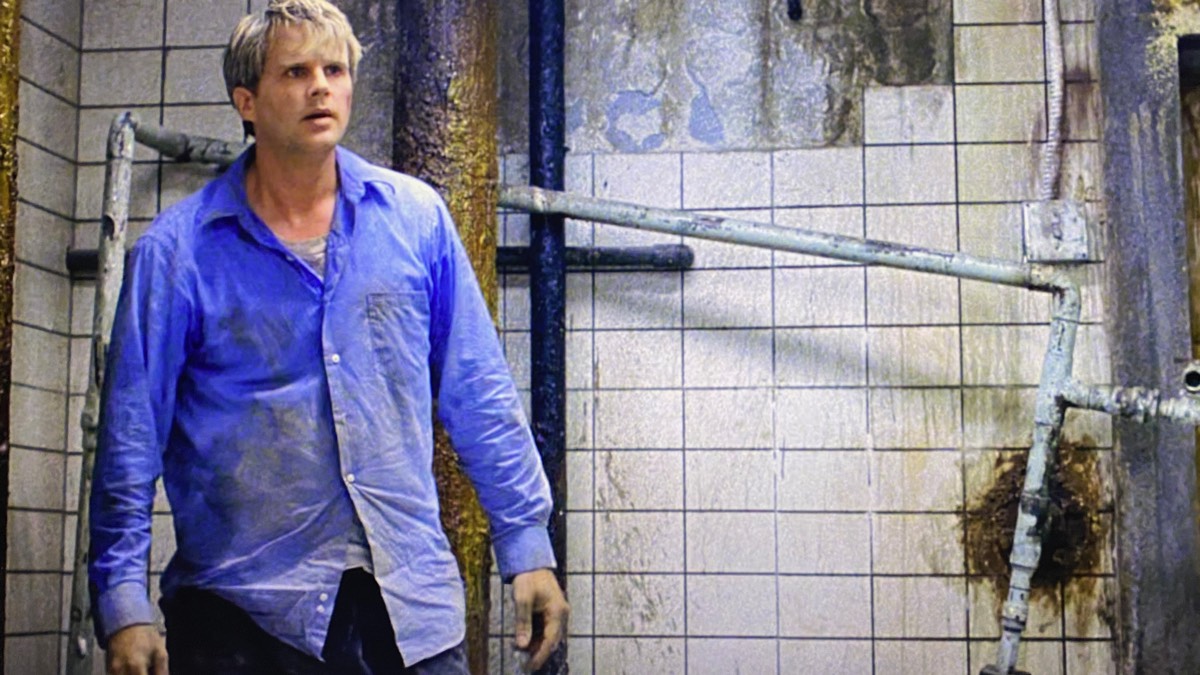
Saw (2004)
Director: James Wan
I really, really didn’t enjoy Saw. Perhaps it’s because Triangle was so good, or my age, or the film’s reputation, although this first one is considered by many to be a bit of a horror classic. Two men wake up chained by the ankles to radiators on opposite sides of a locked room. There is a dead man between them with his brains blown out, clutching a tape recorder. Each man has an envelope containing a tape in his pocket, and when they play them, they hear the voice of their captor explaining the rules of the game he demands they play. Gradually they reveal how they came to be in the room, and why the Jigsaw killer might want to teach them a lesson.
Honestly, it’s like a cocaine-addled inverse Seven. The acting is hammy (I know it must be hard to believably play a man who’s just sawn his own foot off, but still), the jumping around through time annoyed me, and the games within games nature of it felt manipulative and weak. Triangle made an incredibly complex plot feel meaningful and emotional, but this just made me feel grubby. Perhaps, as Danny Glover says in another franchise he is part of, I’m getting too old for this shit.
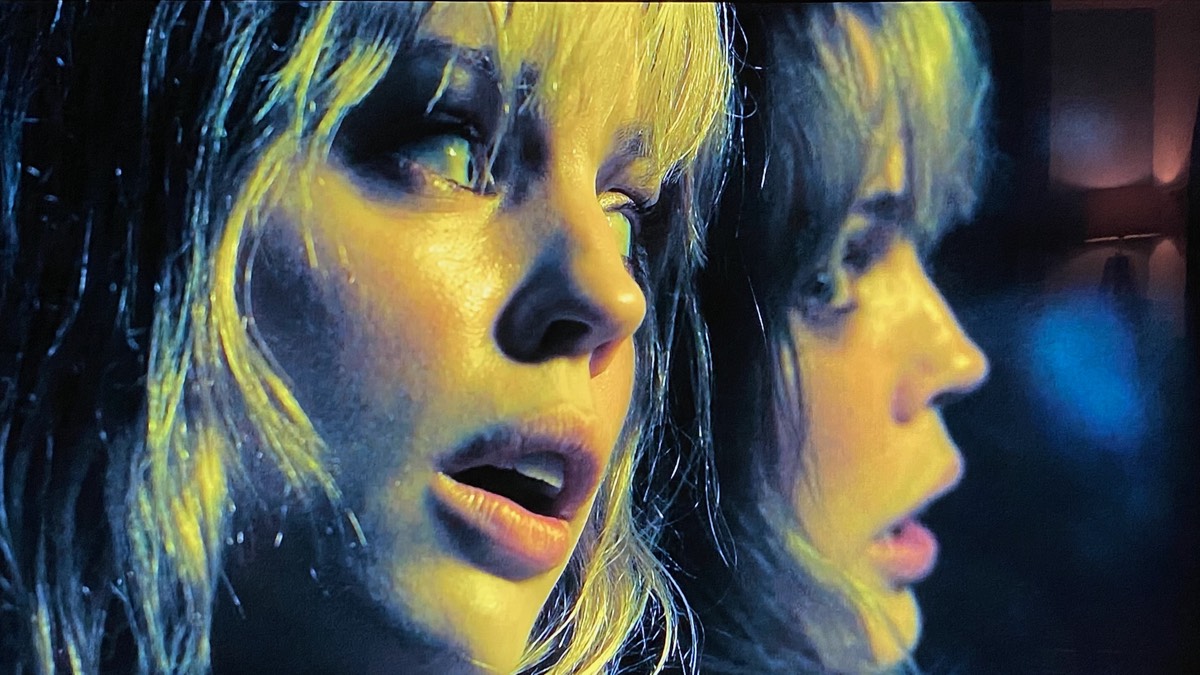
Triangle (2009)
Director: Christopher Smith
One of the reasons I do #31DaysofHorror is to catch up on my ever-growing list of films to see in the hope of finding one that blows me away. Triangle is this year’s first such nugget of gold. Jess is a very stressed single mother with an autistic son. She has agreed to meet Viktor, who has asked her to go out on his yacht with some of his friends, but a freak storm capsizes them, and they are rescued by a passing cruise ship. Disturbingly, there are no passengers or crew, and Jess experiences intense déjà vu as they explore the labyrinthine corridors and decks. Then a masked figure starts picking them off.
It’s impossible to write a post like this without spoiling the premise, but then I was switched on to it by a brilliant Projections Podcast episode which talked about it in depth, and knowing what it was didn’t spoil my enjoyment at all. It’s a time loop story, but what’s wonderful about it is the loop is seems to be independent of Jess, who begins to see multiple versions of herself and Viktor’s friends, setting up a gloriously complex plot that still makes total sense, and at the end hits you with a gut punch.
I wrote a full page of notes after watching it, thinking through what it all could mean, which shows how excited I was. It’s about the patterns we find ourselves in, the bad habits we can’t break, especially with the people we love. Jess’s trauma creates a loop in time, a knot she can’t untie herself from, and the cruise ship’s name, Aeolus, aludes to Sisyphus, who was punished by Zeus for twice cheating death and had to push the boulder up the hill for eternity. I spent a good hour trying to work out the point at which she could break the loop, but even at that moment, her propensity for violence doesn’t allow her to behave differently. Hell, indeed. Heartbreaking.
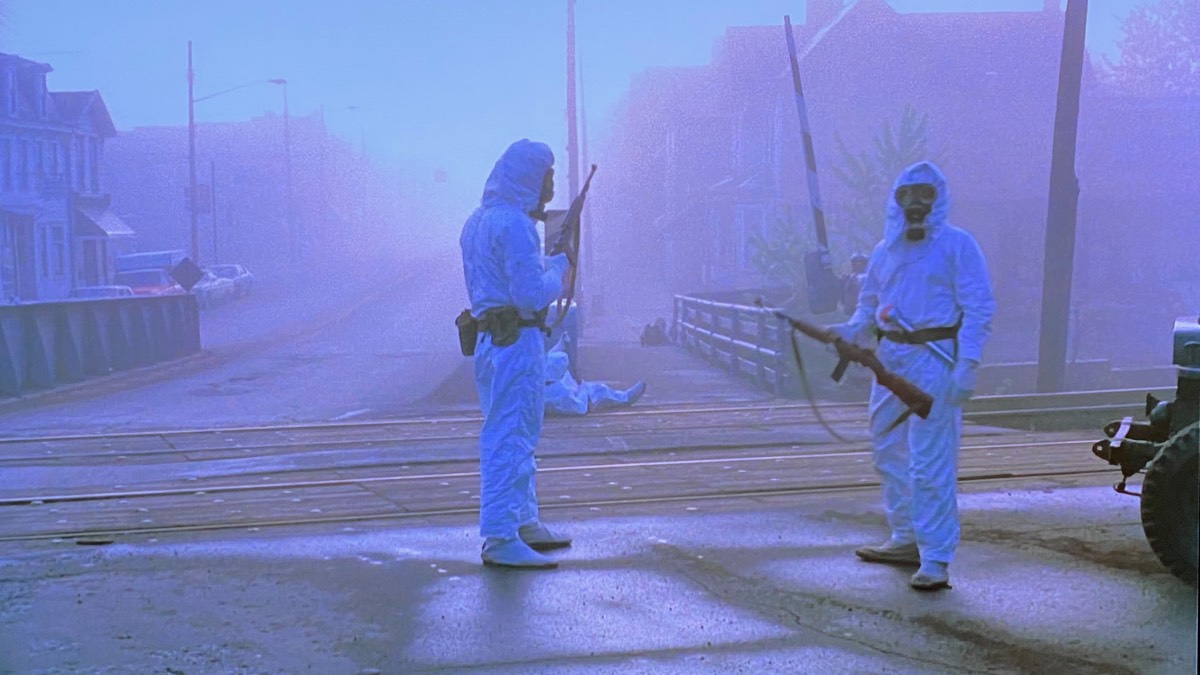
The Crazies (1973)
Director: George A. Romero
It’s hard to know what to make of this period of George A. Romero’s career. He was experimenting, I guess, because how else does an artist follow up a debut like the seminal Night of the Living Dead? He made There’s Always Vanilla, a comedy-drama, then Season of the Witch, a feminist witchcraft film, then this, his fourth film, The Crazies. A military developed virus is accidentally released into the water supply of Evans City, Pennsylvania, and the military attempts to impose martial law to contain its spread. Some citizens immediately display symptoms, most allow themselves to be herded up, and others revolt.
The narrative has two stories in parallel—the military and doctors trying to control the situation, and a small group of locals, including ex-Green Beret David, his pregnant wife Judy, their friend ex-soldier Clank, and a father-daughter couple they meet along the way, Artie and Kathy. In the general hysteria, it is hard to tell who is acting strangely, which is how the virus presents itself, and Clank’s aggressive behaviour could just as easily be PTSD from Vietnam. Romero shows the army as full of ordinary people trying their best to follow orders in awful conditions, and the politicians and analysts in Washington wrestling cynically with ways of both solving the problem and covering it up, including dropping a nuclear bomb.
It’s a decent horror film that lacks subtlety or pizazz, instead moving quickly along a rather plain arc. The final scenes have more emotion in them, and perhaps the coldness of the rest of the film is my problem with it. In too many places it’s a chilly tale of white-suited men in gas masks shooting at people and pushing them around, while officers and scientists shout at each other, but the human drama is decently played, and there is some potent imagery.
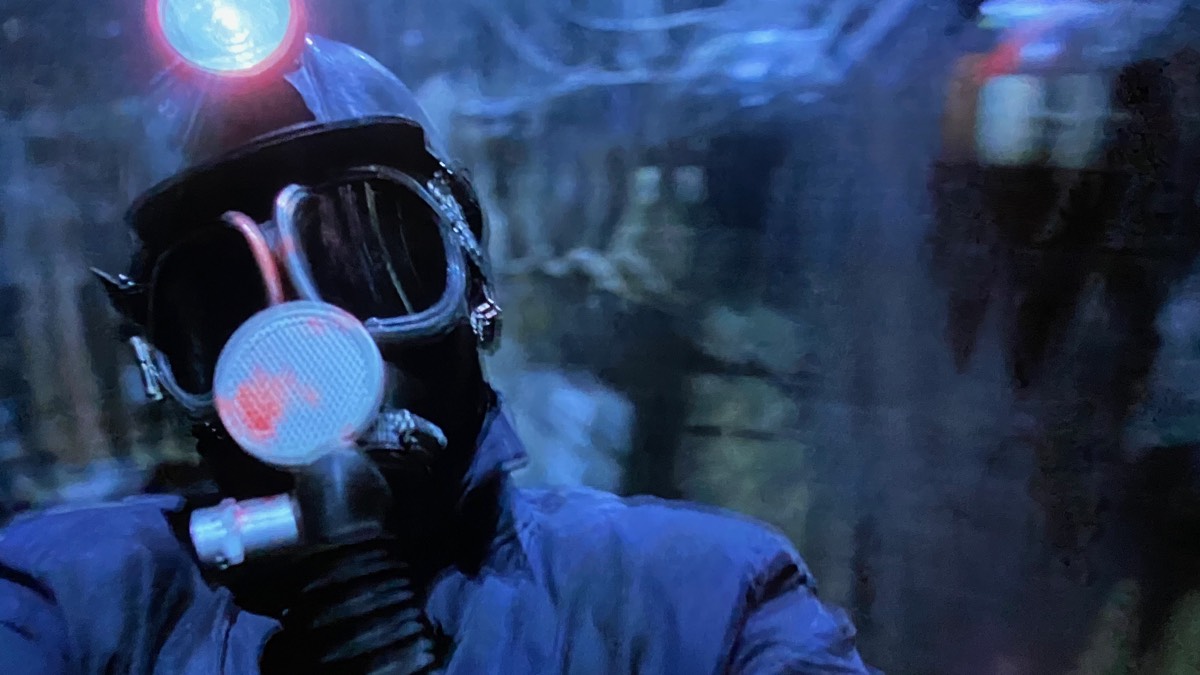
Director: George Mihalka
My Bloody Valentine is one of those films that is talked about with reverence in horror circles, but until I got back into horror in 2017, I’d never heard of. In Valentine Bluffs, Canada, twenty years previously, the mining town’s annual Valentine’s Day dance is marred by an accident that leaves several miners trapped underground for weeks. Only one survives, Harry Warden, but he is driven insane. In the present day, the mayor decides to restart the cancelled tradition of the Valentine’s Day dance. At the same time, T.J. returns from California unexpectedly and tries to rekindle his relationship with Sarah, who is now with T.J.’s best friend, Axel. After a string of brutal killings, the sheriff cancels the dance, but the youngsters decide to have a party anyway in the mine’s canteen. T.J. and Axel’s jealous rivalry is overshadowed by the return of Harry Warden, who starts to kill everyone at the party.
It’s a unique film. The young male characters are miners, and it was exciting to see working class characters and locations in a film like this, partially because it reminded me of my steelwork town roots. It’s unashamedly chasing slasher audience money, following previous date-based titles like Black Christmas (1974), Halloween (1978), Friday the 13th (1980) and Prom Night (1980), but it has a delicious charm, because the characters have a raucous authenticity that transcends the occasional acting lapse.
The deaths are incredibly well staged, and the atmosphere once we get down into the mine is perfect, probably because it was filmed underground in a real mine. The killer wears a terrifying miner’s suit and mask that gave me goosebumps. They don’t make them like this anymore.
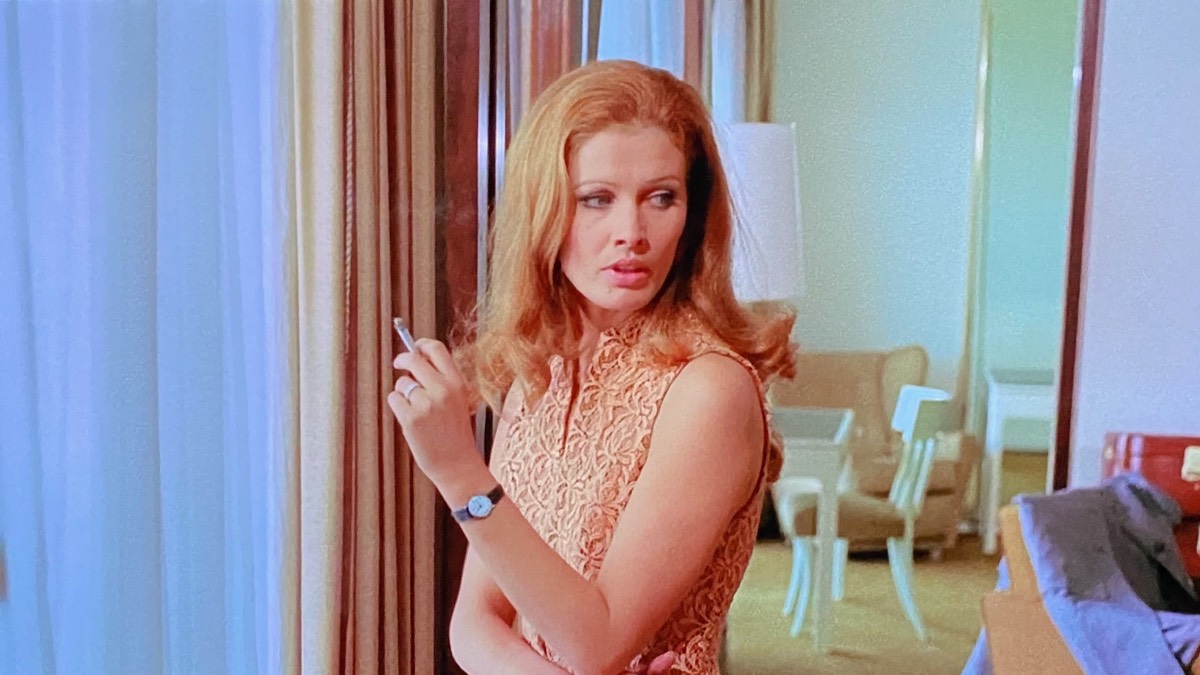
Director: Sergio Martino
The Case of the Scorpion’s Tail involves Lisa Baumer, whose husband is killed in a mid-air plane explosion, and her inheriting from him a million dollars. They had an open marriage and lived in separate countries, and soon people are coming out of the woodwork to extort her out of the money. She leaves London for Greece to sign legal documents, and the insurance company send an investigator, Peter Lynch, to follow her. She takes out the million dollars in cash (!) with the plan to carry it in a bag to Japan, where she is to meet a mysterious other person, but before she can leave, a killer begins to pick off anyone with connections to her dead husband.
Sergio Martino made this film the year before his witchcraft and cults movie, All the Colors of the Dark. I thought it would be a giallo, or at least a proto-slasher, but it is far more a crime-thriller, making it another 31DaysofHorror outlier. Having said that, Martino shoots much of it like a horror film, and his handheld camera is often roving, whether on his actors shoulders or following them up staircases, and he is fantastic at composing shots that leave empty spaces where a threat could be lurking. It’s a fun film.
Many films were made in this period that were set in European countries, like this one, aiming for audiences who were just beginning to travel further on holiday with cheaper airfares. My mum only flew abroad once in her life, in 1969, for a package holiday in Torremolinos. A couple of years ago, my gran was clearing out her house to move to a nursing home, and she asked me to choose one object as a keepsake, and without knowing its history, I took a wooden bull with a bell around its neck from her kitchen wall. It’s on my kitchen wall now, and of course that bull was bought on a cheap holiday with my mother to Torremolinos, which is my tenuous personal connection to the similarly twisting The Case of the Scorpion’s Tail.
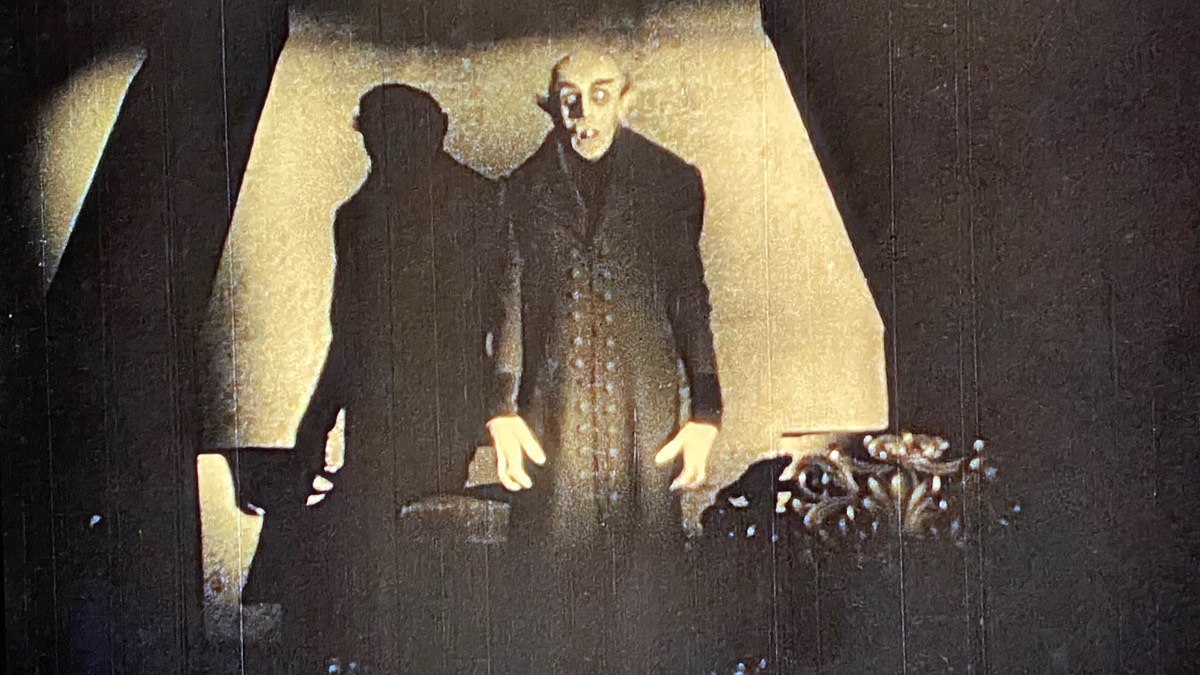
Nosferatu (1922)
Director: F.W. Murnau
I wanted to see the original Master, so I put on the oldest unseen film in my collection, Nosferatu. I appreciated the original Dracula and Frankenstein, but they were pretty dry in places. Nosferatu is ten years older again, and while I’d love to be able to say I love these old classics, this did feel like homework.
Hutter, an estate agent in Wisborg, is sent by his boss, Knock, to Transylvania to sell a dilapidated old building to Count Orlok, a new client. Once there, he is bitten by the Count, who is actually a vampire. Orlok sees a photograph of Hutter’s wife, locks Hutter in his room and sets off for Wisborg. After slaughtering the crew of the ship he is travelling on, Orlok sets about drinking the blood of all the citizens of Wisborg. Hutter rushes home, but his wife, Ellen, realises that only she can put a stop to Orlok’s deadly reign.
There are well-known iconic images and scenes in this film, and it’s amazing to see them in their proper place, for example Orlok rising from his coffin and stalking the ship he is travelling on, the shadow of Orlok on the wall of the stairs as he climbs to Ellen’s bedroom, and Orlok’s disintegration when he is caught in the sun. Max Schreck’s Count Orlok creates electricity in every scene he appears, but the crazed acting of the time stripped away all the tension for me, and there are too many long stretches of travelling between locations, whether by foot or carriage. Having said that, the string of coffins being carried along the main street of Wisborg is shocking. The townsfolk think it’s a plague. That’s when it hit me how deadly this creature is: The Master.
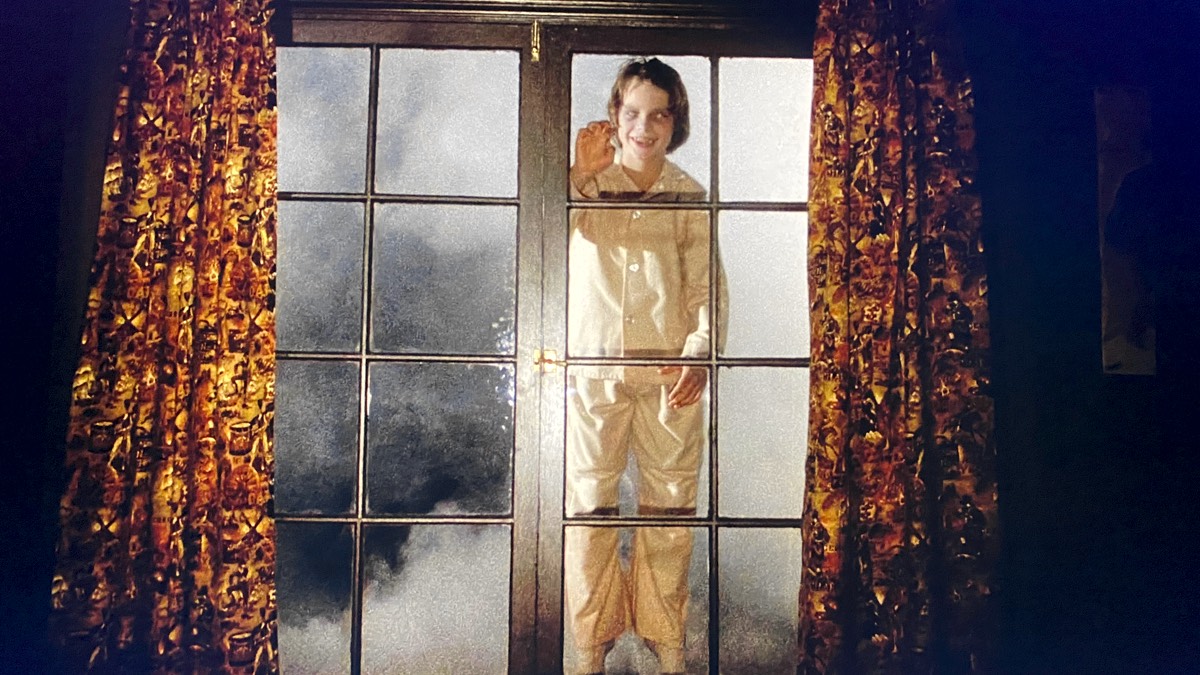
Salem’s Lot (1979)
Director: Tobe Hooper
Salem’s Lot has a special place in my heart. It was the first scary book I ever read. The film is the two part miniseries I remember from the eighties stitched together. It smartly does away with the vast array of characters in the novel and concentrates on Ben Mears, the returning writer, who is researching a book about the Marsten House, which has recently been bought by the public-facing Mr Straker and reclusive Mr Barlow. Straker and Barlow have also just bought an antique shop in the town, and the local people are fascinated by the mysterious pair. Of course, Mr Barlow is a vampire, and very quickly he begins to turn the townsfolk into his slave vampires. Ben and his companions have to stop him.
I can’t remember the last three-hour film I watched, but there was enough going on in this one to keep my interest. The script is good. There’s a believable (if slightly cringey) romance between Ben and Susan, a new teacher at his old high school. The vampires look properly dead and are very scary, and the little dramas and jealousies of small town life are believable. I’d forgotten the iconic moments, like the younger boy floating outside his older brother’s window, and the grave digger opening the coffin. It all still works.
It was fun to see how Tobe Hooper’s Marsten House had echoes of his Texas Chain Saw Massacre house, with feathers and dust on the floor, the stuffed animals on the walls, and general air of rot and decay. It was a little upsetting to realise how closely The Master in Jakob’s Wife mirrored Barlow. I mean, come on! I guess it shows the power of Barlow’s screen presence, and ultimately even he is a homage to Nosferatu.
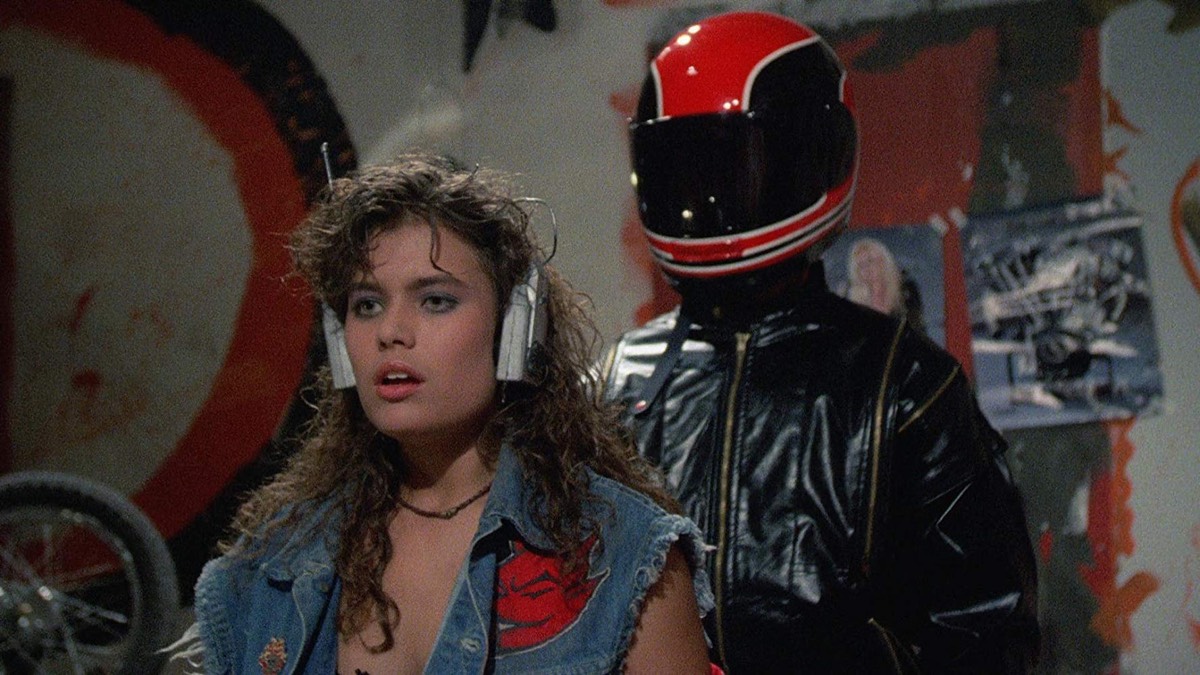
Nightmare Beach (1989)
Director: Umberto Lenzi, Harry Kirkpatrick
It’s the late eighties, and it’s Spring break, somewhere near Miami, Florida. Thousands of young people are in bars and cars all along the seafront, drinking, sunbathing and having sex. A biker gang has a vendetta against local police chief Strycher after he framed their leader, Diablo, who we see die in the electric chair. But within days a mysterious biker with a devil’s trident on the back of his motorcycle starts electrocuting random people, and the Mayor, who is desperate to keep the murders under wraps, begins to wonder if Diablo is back from the dead.
Nightmare Beach shouldn’t work. It’s cheesy and sleazy, the acting is ropey, the dialogue is so-so, and the premise is ridiculous. The Lighthouse, my original pick, was boring me silly, so I flicked through my watchlist and picked Nightmare Beach instead because it seemed like the complete opposite. It was only on my watchlist at all because of its link to director Umberto Lenzi, who made the bonkers-wonderful Nightmare City.
But there is a lot to love in Nightmare Beach. It’s made well, with solid cinematography and an all-out eighties rock-style soundtrack, and the central pairing of Skip and Gail are surprisingly sweet and well played. The redoubtable John Saxon plays the villainous local police chief, and the special effects of the various kills are pretty good. It’s fun! I would have been fifteen when this was made, and even if I was American, I would never have gone on Spring break like these characters do, so there is some nostalgic wish-fulfillment going on in me, for sure. Everyone is so young and beautiful. An unexpectedly solid slasher that made me feel like a teenager again.
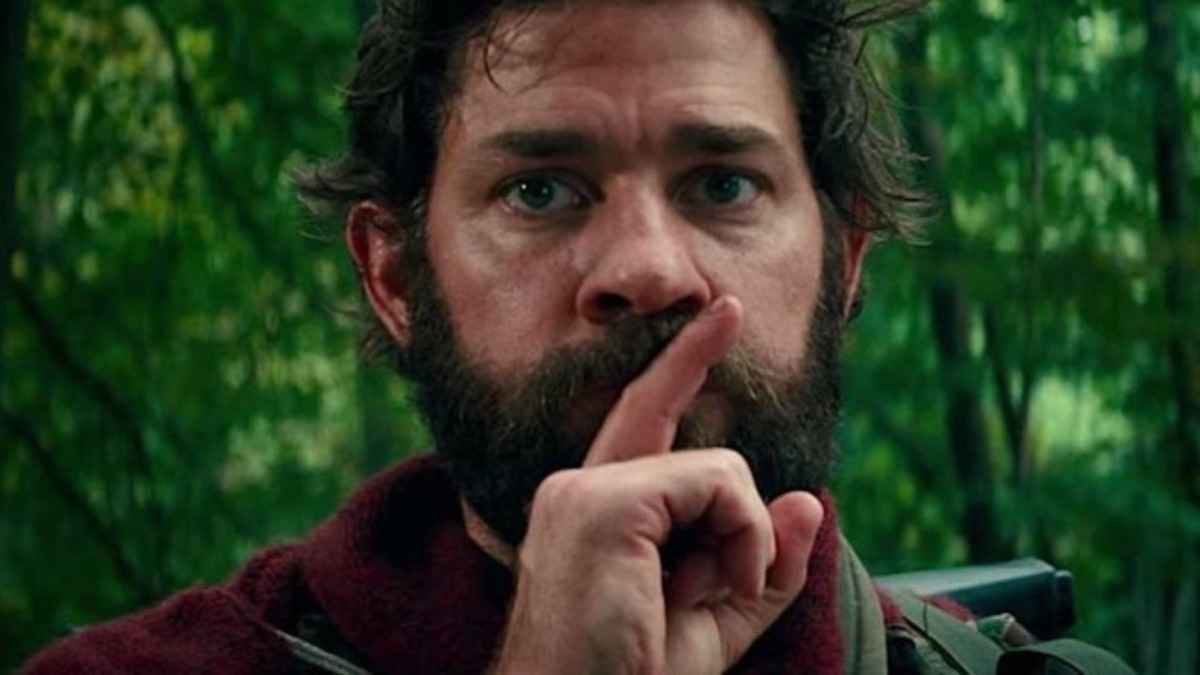
A Quiet Place (2018)
Director: John Krasinski
My brain combined The Thing and The War of the Worlds to suggest to me A Quiet Place, one of many recent horror blockbusters I hadn’t seen. A family are trapped in their valley by blind alien creatures with impenetrable armour and incredibly acute hearing. The family have adapted to the new reality in ingenious way, but their youngest son finds a toy in an abandoned shop, and not old enough to understand the danger, turns it on. The noise it makes attracts an alien that kills him. The film skips ahead a year to show the family struggling with loss and guilt, the trauma of their son’s death compounded by the fact they are fighting to survive off the land, the woman is pregnant, and the smallest noise could get them all killed.
The locations are The Thing-like in spirit but transplanted from Antarctica to rural American cornfields—characters walk between buildings on unspoken errands, there are marked paths lit in the darkness, and an unseen enemy lurks all around. The valley their piece of land lies in makes their farm a visual hub for surrounding farms, whose people they almost never see because it is too dangerous. Everyone has retreated into their homes to survive. (This came out in 2018. How little they knew.) Each night the father lights a fire on top of a corn silo, and the other farms respond with their own. This is all the community they have left.
There are plenty of thoughtful details like this, and Krasinski displays a touch of Spielberg in the way he shows the children’s lives, as well as in the adrenaline-inducing set pieces, some of which remind me of the children running from velociraptors in Jurassic Park. The emotional manipulation can feel a little overt, and the jump scares a bit annoying, but it’s a straight story with children in peril and parental sacrifice at its heart. It’s also great to see a deaf character in such a prominent role in a story. A Quiet Place was a surprise. I can see why it made the splash it did when it came out.
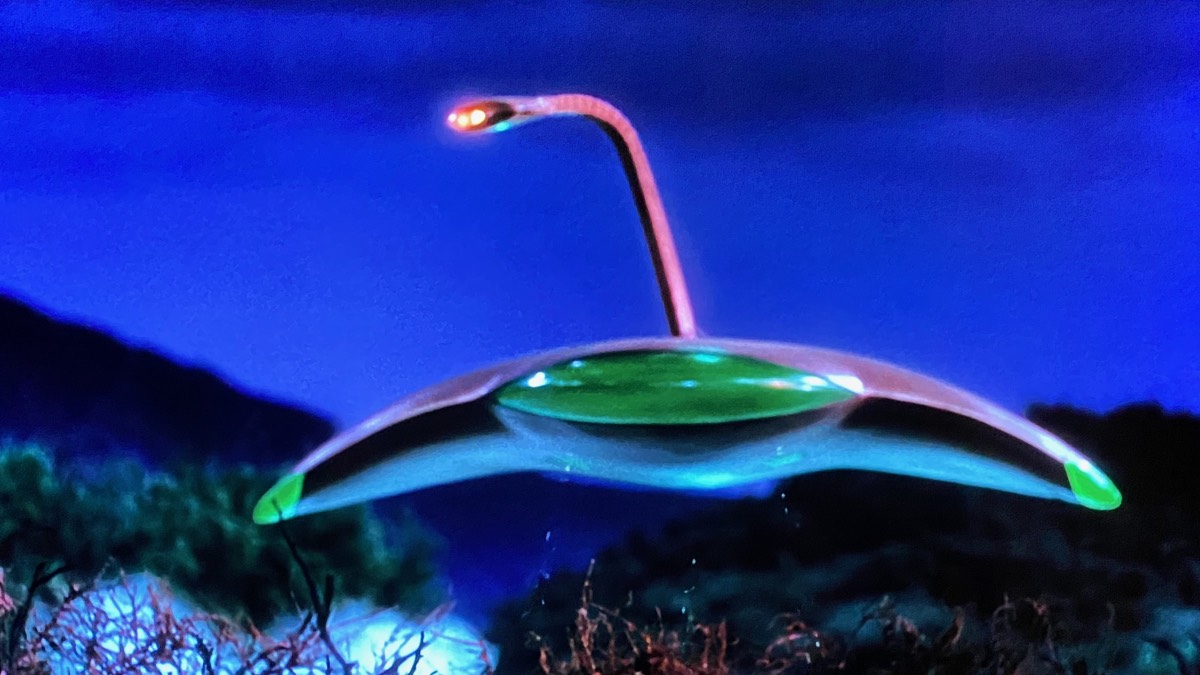
Director: Byron Haskin
I recently watched the Spielberg/Cruise War of the Worlds, which I found surprisingly bleak, so I thought I’d go back to the original 1953 adaptation, The War of the Worlds, to see what that was like. That was also bleak, but softened by the folksy charm of small town 1950s America. It opens with a black and white newsreel montage of both World Wars, then bursts into colour, which I didn’t expect. A meteor comes out of the sky and crashes near the small town of Linda Rosa, where Dr Clayton Forrester is fishing with two scientist friends. The townsfolk are excited, and Forrester gets drawn into investigating the fallen object, while also falling for librarian Sylvia van Buren. More objects arrive, and when alien machines rise out of the burning rock, the army are called in, but they are helpless when the machines attack. Forrester tries to find a weakness in the alien technology, but with the invasion taking place worldwide, a swift, methodical genocide of humankind begins.
It was shocking to see that the more effective scenes in Spielberg’s version were directly lifted from the original, none more obviously than the section where the alien tentacles are investigating the house. This isn’t long after World War 2, but where The Thing From Another World is afraid of communism, this seems to be more about processing the trauma of war. The story lingers in long sections where Forrester moves through a devastated landscape filled with refugees, violent looters and unexpected alien attacks. Every attempt to stop the invasion fails, and humans only survive through perseverance and luck. Ironically in today’s world, it’s the environment that saves them.
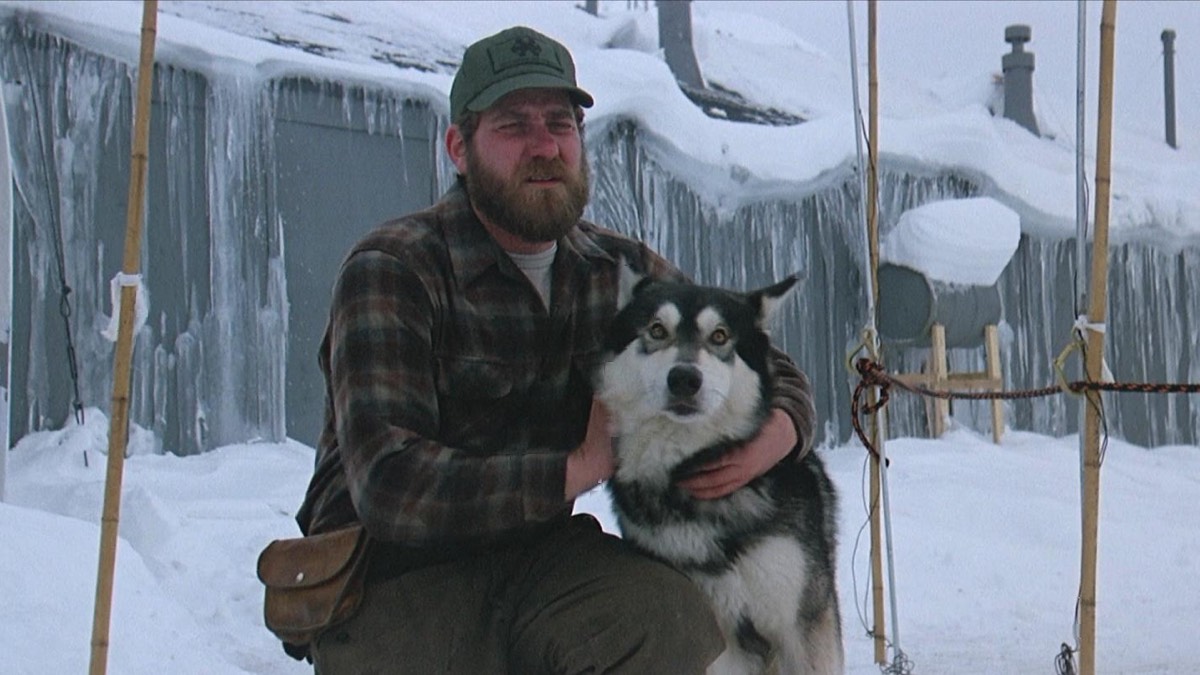
The Thing (1982)
Director: John Carpenter
I’m breaking one of my #31DaysofHorror rules with The Thing, because I saw it almost exactly five years ago. It was a key film in getting me into horror movies again after a fifteen year hiatus. The chance to watch it back to back with The Thing From Another World, one of John Carpenter’s favourite films as a child, was too great an opportunity to miss. It’s a different take on the premise of an alien being uncovered in polar ice. In this one, the shape-shifting alien picks off the crew when they are alone, creating exact replicas, so nobody knows who is human and who is not. Suspicion turns to paranoia, and the remaining humans have to make sure the alien doesn’t leave the base and take over the world.
This is one of those films from the eighties that blew my teenage mind. The creature special effects still look spectacular forty years on, and they were created almost entirely by the shockingly young Rob Bottin, who was only twenty years old. The gloopy carnage in 4K HDR made me giggle with shocked joy, but it’s so much more than the special effects. It’s paced beautifully, every scene is tuned to perfection, every character has a personality, and it has one of the most fascinating and entertaining monsters ever put on screen. It shares ideas with the similarly spectacular 1978 Invasion of the Body Snatchers. It’s also, pleasingly, a whodunnit like Werewolves Within.
The Thing is John Carpenter’s best work. There are lots of little call backs to The Thing From Another World, from the title reveal, to the video of the Norwegians standing in a circle, the alien diving on fire out of a window into a bank of snow, the block of ice at the Norwegian base, the wooden slats on the corridor floors, and even the fact MacReady and Captain Hendry are both pilots. Carpenter’s version is an absolute classic and one of my favourite films, full stop.
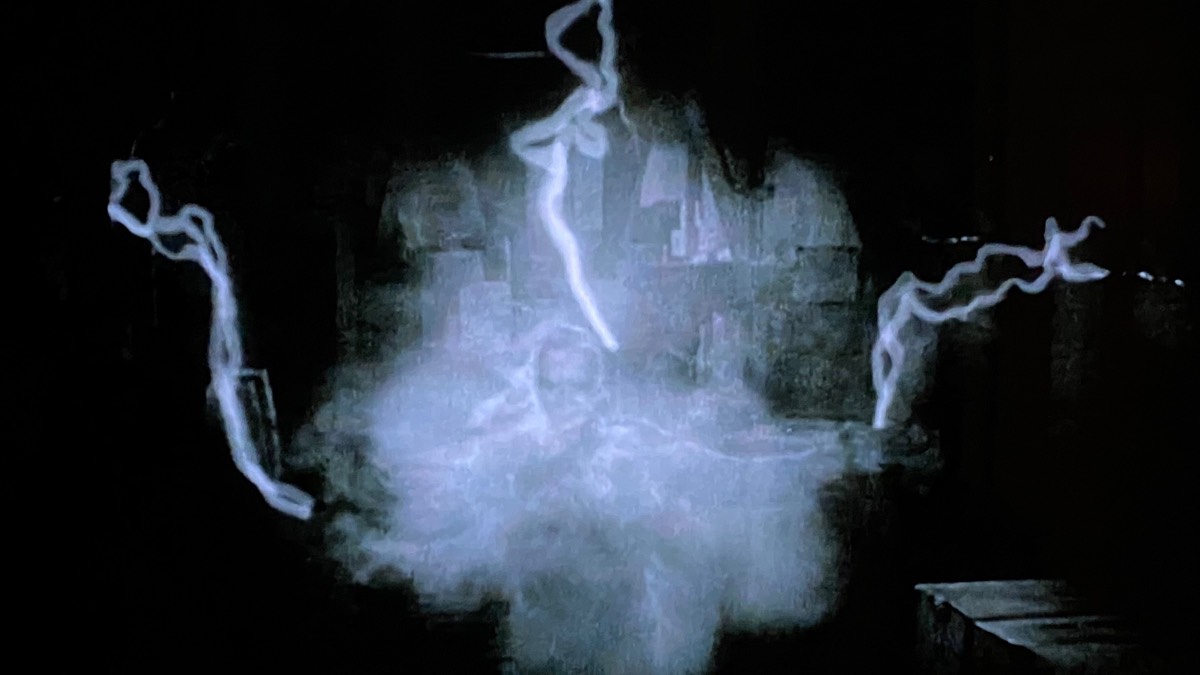
Director: Christian Nyby
After Shadow in the Cloud, I wanted a calmer, less frenetic experience, but to also feel like the next film flowed from it naturally, so I chose The Thing From Another World. It’s set not long after the end of the second World War and again involves the military. Captain Hendry is a pilot with the US Air Force and is sent with his crew to a remote scientific outpost in the Arctic to investigate a report of a crashed aircraft. The lead scientist is the prickly Dr Carrington, and when the investigative team realise they have discovered the remains of a flying saucer, as well as a frozen alien life form, there is a clash between the military, the scientists and the press as to what they should do next. When the alien is accidentally thawed, its unique biology threatens humanity.
The US military is presented as confident and possibly a little complacent. The soldiers are charming and banter with each other at card tables, while Hendry’s crew tease him about a girl he knows at the outpost they are to be sent to. The newspaper reporter, Ned Scott, seems to have access to all areas, even on a military base, because he’s one of the guys. The tone is closer to comedy than sci-fi or horror. In a weirdly charming scene, scientific assistant Nikki (we only get her first name, presumably as she’s a woman) ties Hendry to a chair because of his predilection when drunk of having ‘octopus hands’ and feeds him whiskey. At this point I wondered what I’d signed up for.
The story gets juicier when the body of the frozen alien creature, a rip-off of Frankenstein’s monster, is accidentally covered with an electric blanket, and after a few hours of unnoticed dripping is set free to begin its killing spree. The lead scientist is a coldly ambitious loon, but he works out that the creature uses blood to regenerate and spread. Of course, the military saves the day, and the reporter gets the final, iconic lines, broadcasting his report: ‘Tell the world. Tell this to everybody, wherever they are. Watch the skies everywhere. Keep looking. Keep watching the skies.’